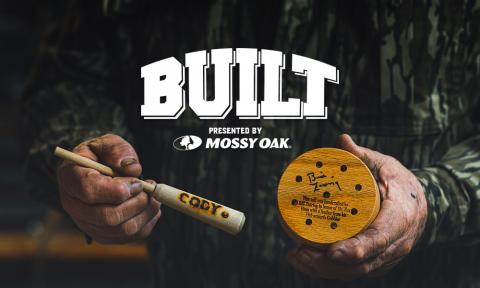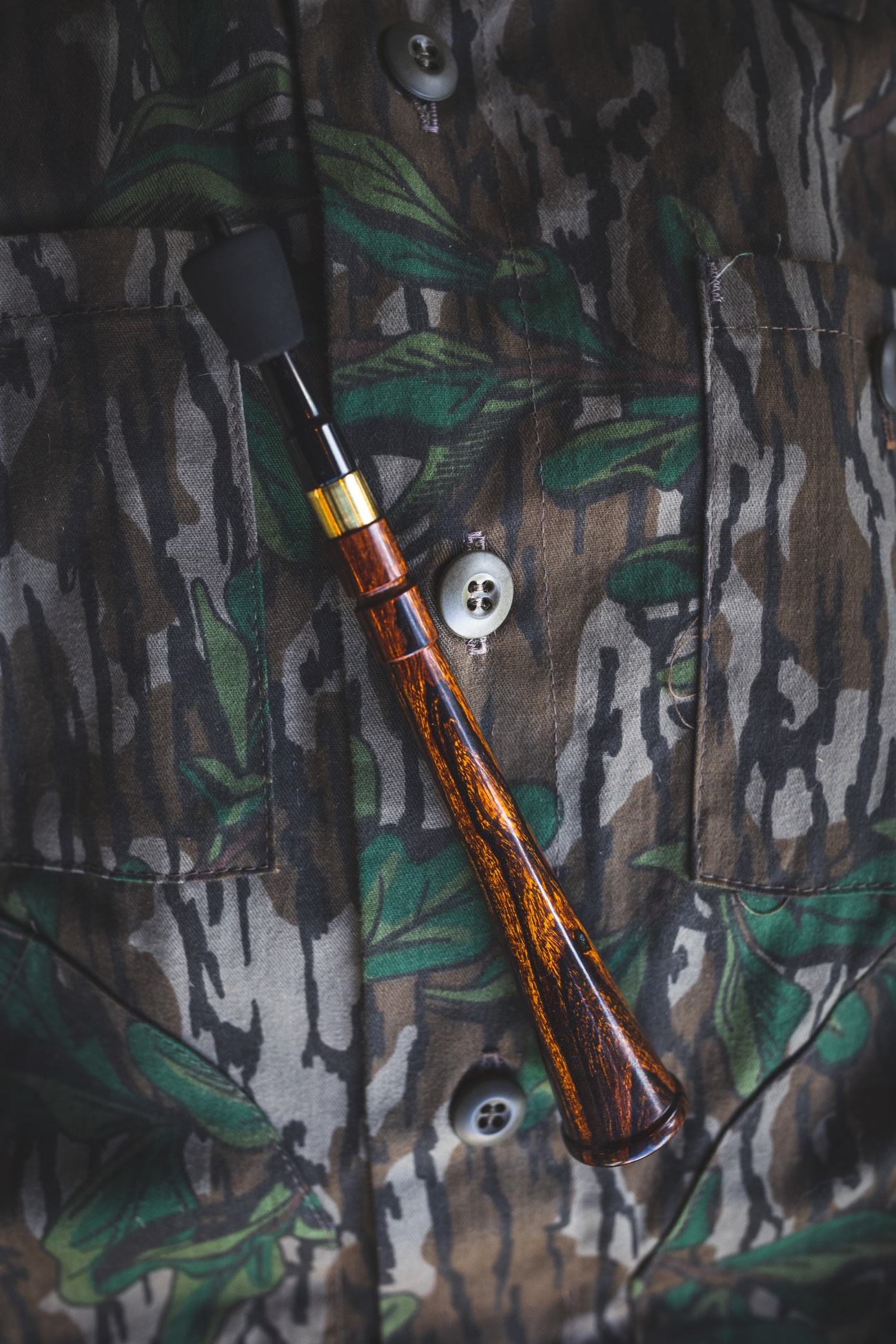
Photograph by Rob Kinney
Brodie Swisher
Turkey hunters are a rare breed. They tend to cherish the past, as well as strive for a better tomorrow, like no other hunting community out there. Turkey hunters heavily infected with the disease seem to be suckers for nostalgia. They love to linger on the stories, tools, and tricks of hunters from days gone by.
Take a closer look at today’s turkey hunters, and you’ll see that many have a longing to better know the days gone by. From the camo they wear, to the call hanging from their neck, true turkey hunters are vintage souls with a connection to the legends that paved the way, shared their stories, and brought modern day turkey hunting to life.
Just consider the number of turkey hunters hitting the woods this spring with a trumpet or wingbone call dangling from a lanyard around their neck. The trumpet call was once the standard call of the ol’ time turkey hunter. Nowadays, you’ll see men, women, boys and girls with a trumpet close to the vest in hopes of drawing a bird to their gun with this vintage style of calling.
Yes, there is truly a revival of the trumpet turkey call taking place in the spring woods. But where did it come from? Why have so many hunters set their sights on gobblers drawn to the gun with a trumpet? Read on for a look at where the trumpet came from, why it’s effective, and what brought about its revival.
The History of the Trumpet Call
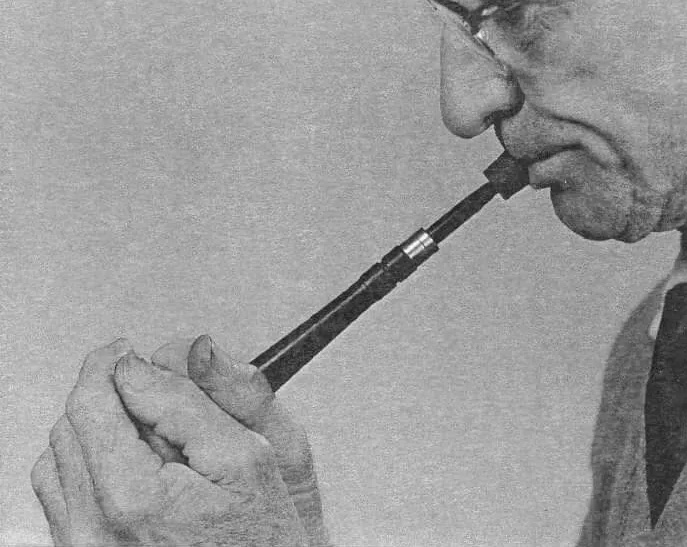
Legendary callmaker Tom Turpin blowing on a trumpet call.
Undoubtedly, Native Americans were constructing turkey calls from the bones of birds long before turkey hunting for “sport” was ever a thing. Made from the bones of a turkey wing, the wingbone call has been around longer than most hunters can imagine.
However, there are two names you’ll hear when you dig back to the origins of the trumpet style call hitting the market. Those names are Charles Jordan and Tom Turpin. Jordan produced and sold what was known as the Jordan Yelper back in the late 1800s and early 1900s. The calls were constructed from river cane, with a wingbone mouthpiece. Jordan was known by many as the father of the modern day wingbone yelper.
The problem with a wingbone, however, is the struggle to find consistency from call to call. With bone size varying from bird to bird, the sound of each call would vary from call to call as well. And that’s where Tom Turpin began to focus on a plan for a more consistent yelper than anything ever produced at the time.
Turpin began building calls from cane and wingbones around 1899. With inspiration from the Jordan style call, Turpin started to experiment by building calls from turned wood in the early teens. He borrowed a Jordan Yelper in hopes of making his own version of the call, but continued to run into inconsistencies that came with using a wingbone mouthpiece, compounded by the different hole sizes also found in cane.
Turpin soon began to step far outside the box of what could be done to develop a consistent call design. He even had a dentist friend fill a turkey wingbone mouthpiece with dental cement, then drilled it out for a consistent, repeatable mouthpiece design. Other mouthpiece materials in those early days included turned bone, ivory, horn, and hard rubber in the 1940s.
This new turned wood trumpet design with a consistent mouthpiece and barrel, complete with a cork lip stop, soon became the standard and were quickly known across the country as Turpin Yelpers.
“The Turpin Yelper is basically a wingbone or Jordan style cane call of controlled dimensions,” says Steve Turpin, call maker and great-nephew of Tom Turpin.
Steve Turpin still makes the Turpin Custom Game Calls trumpet call to this day from his shop in Memphis, Tennessee. He admits that much has changed since those early days when his great uncle (Tom) and grandfather (Inman) were making Turpin Trumpets back in the 1900s. “Their calls were known across the country as the Turpin Yelper,” says Turpin. “Pretty much any trumpet-style call, regardless of maker, were labeled as a Turpin Yelper, up until about the last 20 years as it was considered a style of call."
Nowadays, with a growing number of call makers attempting to make a trumpet style call of their own, the calls have more generically taken on the name, Trumpet.
Why Are Trumpet Yelpers So Popular Now?
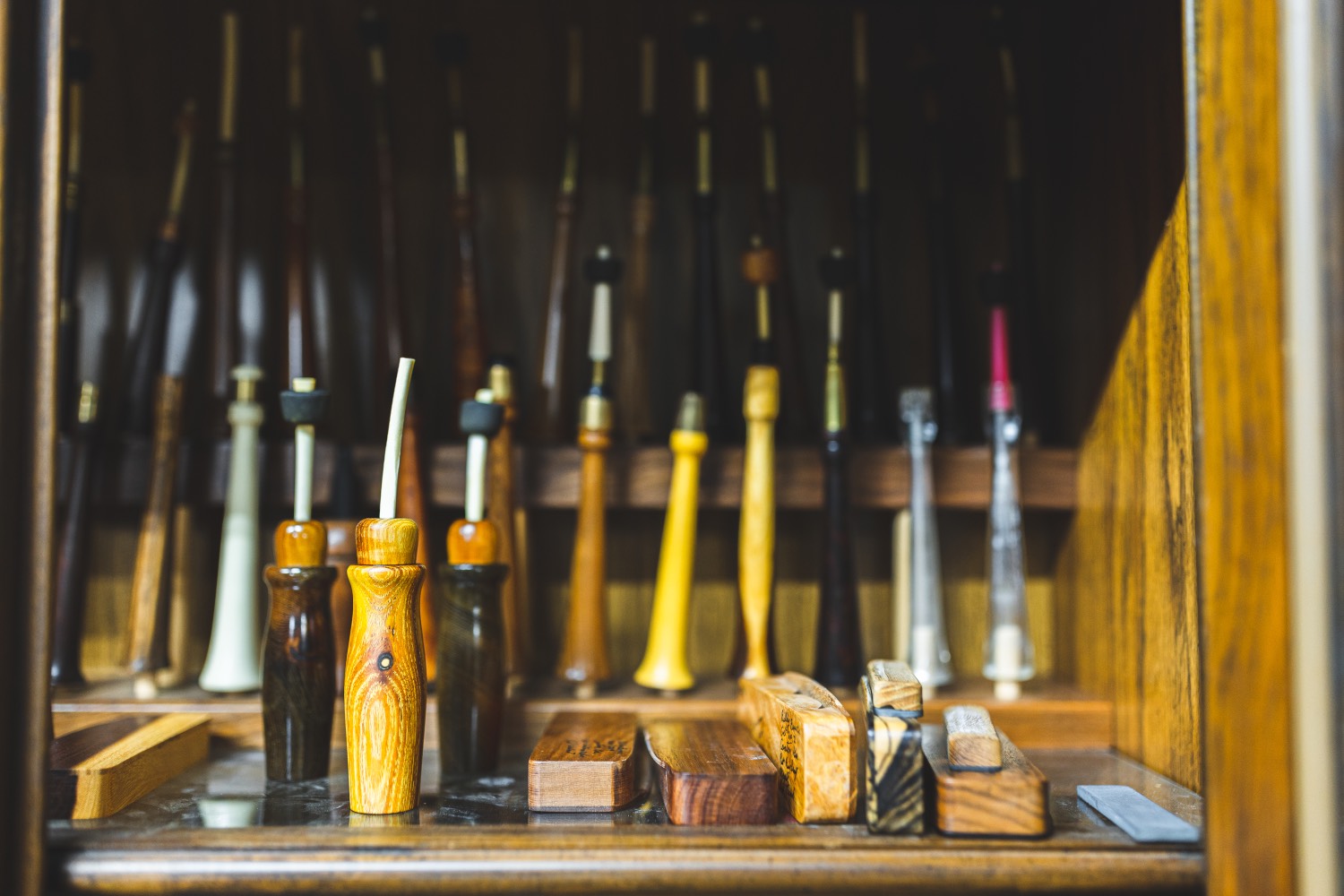
Trumpets featured in callmaker Billy Buice's workshop. Photography by Rob Kinney.
The big question is, why are these calls so popular again? What’s led to the revival of a call from 100 years ago? And while the answers are likely to vary, depending on who you ask, there are a handful of reasons that have led to the most recent interest in the trumpet call. For one, it goes back to the nostalgia. It’s no different than donning an old pair of vintage Bottomland overalls. Turkey hunters like to dig back to the past when it comes to gear.
Read More: THE EARLIEST KNOWN DIAPHRAGM CALLS
But these same hunters also realize the uniqueness of such a call. Savvy hunters know the trumpet delivers a sound unlike every other call on the market. It’s a unique offering to fall on the ears of your local turkeys. And many hunters are finding it to be their not-so secret weapon for calling turkeys in close.
Finally, Turpin says it all comes down to influence. Social media undoubtedly plays a monstrous role in the way hunters perceive a product and what gear they need to add to their arsenal.
“A lot of it seemed to start when Dave Owens of Pinhoti Project put out a Youtube video showing folks how to use the trumpet call,” says Turpin. “He’s got a big following of folks that want to use what he uses. When he started demonstrating the effectiveness of a trumpet call, a lot of turkey callers began to think they needed a trumpet call as well.”
How to Call on a Trumpet Turkey Call
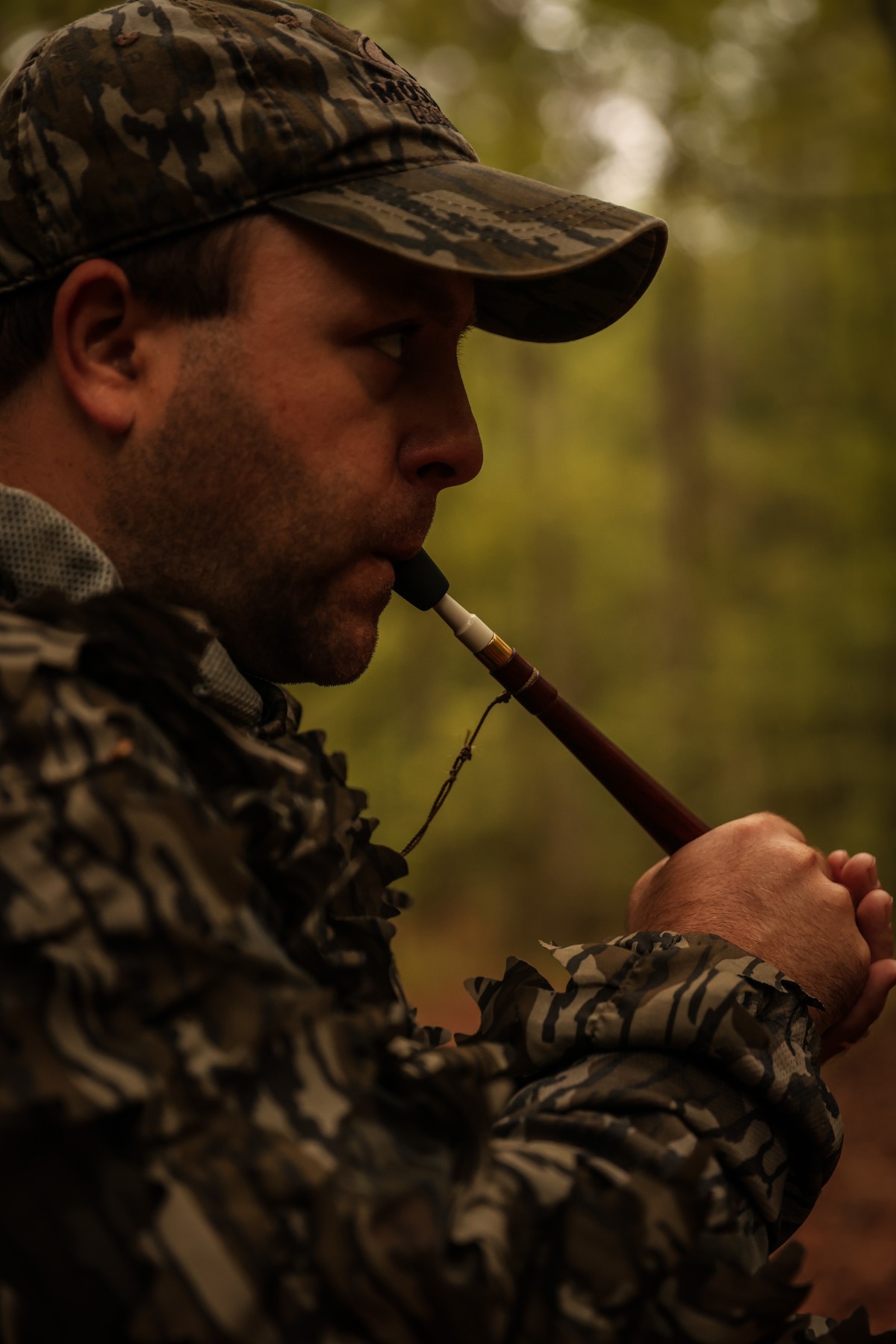
David Hawley of Mossy Oak, pictured here, is an advocate of trumpets and loves to hunt with them. Photography by Hunter Lewis.
You might be surprised, but you don’t actually blow a trumpet call. It is a suction operated call where sound is produced by drawing your breath in. The trumpet call is nothing short of a little musical instrument. And much like you’d spend a considerable amount of time learning to play any instrument, you’ll have to work on your skills with a trumpet yelper as well. Commit to practice for a few minutes every day. Once you get the hang of it, you might realize it’s easier to run than a mouth call. Here’s a few things to keep in mind.
- Proper placement of the lip stop is important. Adjust stopper until you’re getting a comfortable feel and consistent sound. Hand placement over the bell end is also important. You will need to cup your hands forming a kind of funnel as you call.
- Keep the tip of the mouthpiece a little wet when you call.
- Keep your lips relaxed. Fight the urge to “bite down” or squeeze your lips too tight on the mouth piece.
- Draw air through the call toward the back of your throat. Avoid popping your lips and jaws. Smooth and steady suction of air through the call is key.
- Remember, very little air is required to produce turkey sounds on a trumpet. Tightly controlled air pressure is what you’re striving for in the call.
- Practice 5 minutes a day.
















